For a change I ask the hotel boys to call me a
taxi for going to church.
Holy Trinity Anglican Cathedral was built by the
British in the end of 19th century. The Church of England was the
biggest Christian congregation in Yangon then. The door is open, balloons and
flowers inside. A wedding is about to start. There’s a chapel to honor colonial
soldiers. The bricks are drawn on the wall.
We cross the street together with a local who keeps looking at me insecurely and repeats that this is very dangerous. Well, what’s so dangerous about it. Just move calmly and avoid being hit by cars.
Hindu Shri Kali temple was built by Tamil immigrants also in the end of 19th century. The biggest danger is to be hit by dove shit. You get a number on paper in exchange of shoes. Inside people are queuing for blessing fruit. A merry young man comes to explain that he donates here once a month to honor ancestors. His grandfather was a Hindu. Kali is supposed to give everyone what he or she asks for and that’s why even Chinese street vendors come here. He gives me a banana and half a coconut. I’m a bit at a loss and give these later to the old lady who is sitting by the door. An older man asks if I’m a Hindu. He’s from Chennai. Inquires which is better country, India or Myanmar. I skip the ranking.
Next to Sule pagoda is Bengali mosque. Again 19th century, people from East-Bengal, maybe Chittagong, maybe Calcutta. The door is closed. People sell seals and stamps behind the house.
Mogul Shia mosque, beginning of the 19th century, origins from Persia. A boy busies himself at the door. I don’t try to go in, Muslims might not like it.
Jain temple, lions on the roof. The beginning of 19th century. There should be idols inside but some people are busy there and they don’t seem to be fascinated by my presence so I just take a picture of the façade. Opposite the temple young nuns sit on a doorstep and count money.
Surti Sunni mosque, from the middle of 19th century, the oldest mosque in city still in its original state. Merchants from Gujarat. When they were chased out in the 1960ies then they took Rangooni parathas and a Shan noodle dish with them to India.
Synagogue, end of 9th century. The congregation now is about 20 people. I meet two Israelis and two Australians, three of them are Jewish. Before stepping out again I stop to take a picture of the gate and miss by two seconds the moment when a dark red clad monk and black-wrapped Muslim woman pass each other on the street.
Guangdong Guanyin temple, first half of 19th century, Chinese immigrants from Canton. Joyful music inside, people burn papers. In the corner a trees grows through the opening in the ceiling.
Kheng Hock Keong, the biggest Chinese Taoist temple in Yangon, beginning of 19th century, immigrants from Fujian. Beautiful and colorful. A lot of people, especially young people. A cat wants to play with everything and jumps hopefully in the photo bag with all four feet.
Parisian café, 21st century. Contains a few tourists and many locals. Air-conditioned. Pizza slices, cake and coffee.
This is a short walk in hot and humid temperature which takes a couple of hours with sitting stops. And on top of all this they now want to build Bamar nationalist ultra-Buddhist country.
We cross the street together with a local who keeps looking at me insecurely and repeats that this is very dangerous. Well, what’s so dangerous about it. Just move calmly and avoid being hit by cars.
Hindu Shri Kali temple was built by Tamil immigrants also in the end of 19th century. The biggest danger is to be hit by dove shit. You get a number on paper in exchange of shoes. Inside people are queuing for blessing fruit. A merry young man comes to explain that he donates here once a month to honor ancestors. His grandfather was a Hindu. Kali is supposed to give everyone what he or she asks for and that’s why even Chinese street vendors come here. He gives me a banana and half a coconut. I’m a bit at a loss and give these later to the old lady who is sitting by the door. An older man asks if I’m a Hindu. He’s from Chennai. Inquires which is better country, India or Myanmar. I skip the ranking.
Next to Sule pagoda is Bengali mosque. Again 19th century, people from East-Bengal, maybe Chittagong, maybe Calcutta. The door is closed. People sell seals and stamps behind the house.
Mogul Shia mosque, beginning of the 19th century, origins from Persia. A boy busies himself at the door. I don’t try to go in, Muslims might not like it.
Jain temple, lions on the roof. The beginning of 19th century. There should be idols inside but some people are busy there and they don’t seem to be fascinated by my presence so I just take a picture of the façade. Opposite the temple young nuns sit on a doorstep and count money.
Surti Sunni mosque, from the middle of 19th century, the oldest mosque in city still in its original state. Merchants from Gujarat. When they were chased out in the 1960ies then they took Rangooni parathas and a Shan noodle dish with them to India.
Synagogue, end of 9th century. The congregation now is about 20 people. I meet two Israelis and two Australians, three of them are Jewish. Before stepping out again I stop to take a picture of the gate and miss by two seconds the moment when a dark red clad monk and black-wrapped Muslim woman pass each other on the street.
Guangdong Guanyin temple, first half of 19th century, Chinese immigrants from Canton. Joyful music inside, people burn papers. In the corner a trees grows through the opening in the ceiling.
Kheng Hock Keong, the biggest Chinese Taoist temple in Yangon, beginning of 19th century, immigrants from Fujian. Beautiful and colorful. A lot of people, especially young people. A cat wants to play with everything and jumps hopefully in the photo bag with all four feet.
Parisian café, 21st century. Contains a few tourists and many locals. Air-conditioned. Pizza slices, cake and coffee.
This is a short walk in hot and humid temperature which takes a couple of hours with sitting stops. And on top of all this they now want to build Bamar nationalist ultra-Buddhist country.
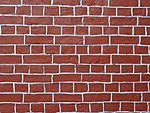
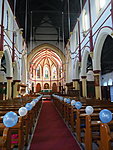
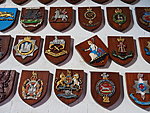
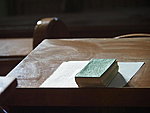
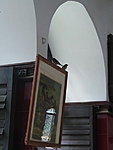
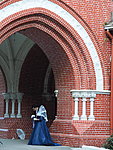

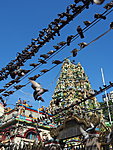
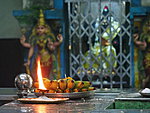

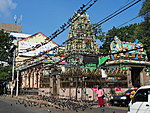
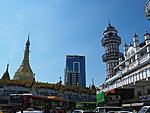
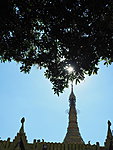
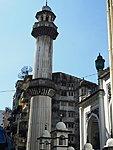
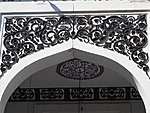
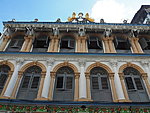
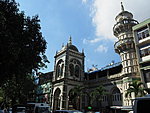
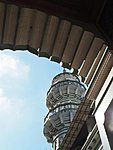
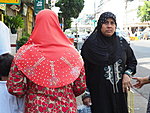
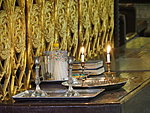
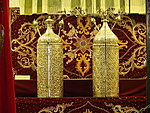
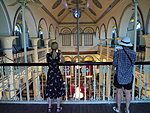
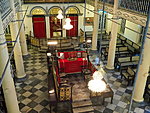

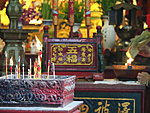
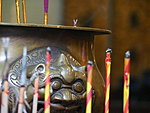
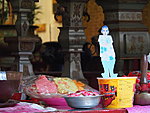
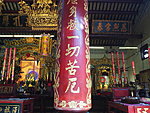

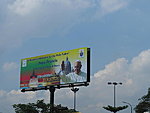
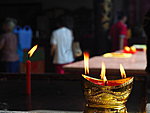

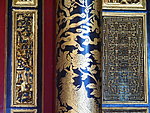
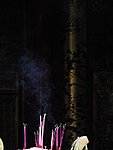
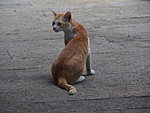
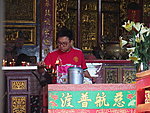

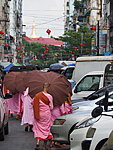
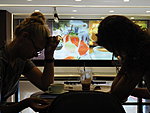
Add a comment